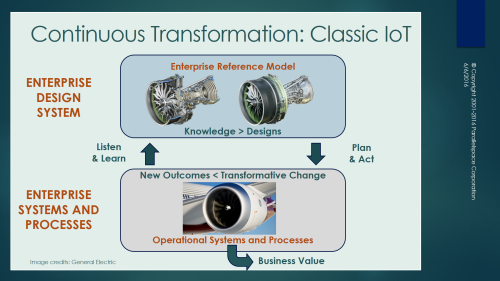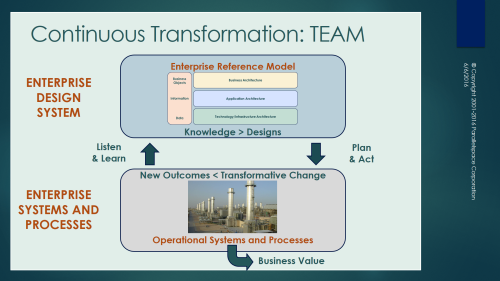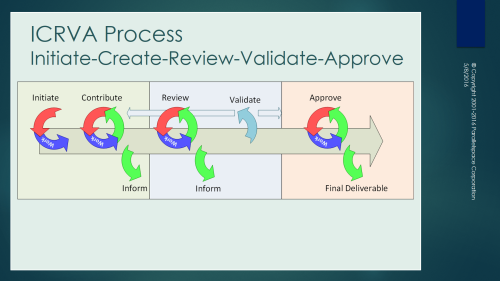[Updated: April 23, 2017]
Enterprise architecture and other tools and methods don’t generate business value – plain and simple; at least, not direct business value. This applies to many categories of enterprise software including but not limited to:
- business intelligence
- big data
- enterprise analytics
- CRM
- ERP, etc.
It’s true. You don’t have to think about. You disagree? …or otherwise, want proof? Read on…
Read on…
At best, these tools and methods can enable or aid in the creation of increased business value. This is actually pretty simple (in hindsight).
Real business value is only realized when an organization’s operational strategies, systems, assets, and processes experience measurable, positive Transformative Change – whether enabled by the use of a particular tool or method; or not.
Here’s the diagram… (click on any of these figures to enlarge them)

Figure 1. Enterprise Architecture Management
Here is some additional information on the ModelMate Continuous Transformation Framework as well as where and how business value is created.

Figure 2a. Continuous Transformation Framework

Figure 2b. Continuous Transformation Framework

Figure 2c. Continuous Transformation Framework
Here’s a more recent elaboration on the Continuous Transformation Framework described above.

Figure 3. Continuous Transformation Framework (updated)
The articles below go further to identify and define the gap that exists between the enterprise architecture reference model for the organization and the organization’s operational systems, assets and processes as the Enterprise Architecture Chasm. (Similarly, there is a gap between the strategy and reality is called the Strategy Chasm).
Related Articles
Best regards,
Michael Herman (Toronto)
mwherman@parallelspace.net















